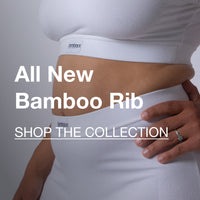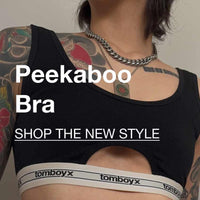What Is Athleisure? When Did It Become Popular?

Athleisure style is now a part of everyday life. It’s definitely not only for working out: People wear this form of athletic wear at school, work, concerts, and casual parties.
Athleisure outfits are everywhere — if you're not wearing one, someone near you is. It's comfortable clothing, it's functional workout gear, and it's fashionable. More than the best of both worlds, the athleisure style is the best of all worlds.
So, how did the athleisure look get its start? What led to the athleisure market becoming the massive titan it is today, one that no one can argue is only a passing fashion trend? How did this style of casual wear (which really only became a mega story in the 2010s) become such an integral influencer of our culture in such a short amount of time?
Let's find out, shall we?
Athleisure vs. Athletic Apparel
The most important thing for us to clarify before we continue is that athleisure is not the same thing as sportswear. In fact, it's far from it.
There's no denying that the two have some cross over here and there, especially when we look a little deeper at their origins, but what they each have become is something far removed from any other.
So, what is athleisure? What is athletic clothing?
What Is Athleisure?
Athleisure is a style of casual clothing that blends the functionality of athletic clothing with the trendiness of streetwear. Specifically, athleisure takes the purposes of the different styles and uses modern sensibilities and tech to bring them together in one garment.
Athleisure blends three main worlds: fashion, function, and comfy performance fabrics.
First, comfort is one of the major contributors to athleisure's versatility. Athleisure wear garments are lounge clothes. Think of a hoodie sweatshirt or the right pair of joggers as prime examples of comfy athleisure wear. Other examples might be a sports bra and yoga pants. Comfort really is key to this style.
One attribute that athleisure clothes share with gym apparel is functionality. While athleisure is certainly made for comfort and lounging, it's also meant to double as activewear. You shouldn't have to do more than take off the blazer you wore to brunch to be dressed in your workout clothes — leggings and a tank top.
There is a sturdiness to athleisure clothes that allows for activity while maintaining levels of comfort.
Finally, the icing on the cake of the athleisure sector is the fashion element. Athleisure is stylish, and it looks good enough for the runway. You can wear it out with friends or on a coffee date. Sometimes, you can even wear a nicer athleisure set to a slow day at the office.
Now that we've covered the definition of athleisure, let's look at how this type of clothing differs from sportswear.
What Is Sportswear?
Sportswear garments help athletes perform to the absolute best of their ability.
Often, sportswear is highly specialized for certain activities. In this way, sportswear is typically better referred to as gear rather than garments.
With athleisure, clothes serve multiple purposes. Even if one of those purposes is to be activewear, the clothing is more general rather than highly specialized.
What Is the History of Athleisure?
Athleisure's origin story differs depending on who you ask. From a certain perspective, it began in the 2010s. Athleisure as we know it began during that decade, but it wasn't the first time the term was ever used.
Athleisure in the 20th Century
The term athleisure was first used in a business magazine in 1979 and actually referred almost exclusively to a type of footwear.
The 1990s, however, would prove a fateful time for the future of athleisure, even if it wasn't clear to the world at the time. In the 90s, the practice of yoga became popular in the West, and yoga pants were trendy for the first time in the western world. This was a turning point for athleisure.
The 2010s Explosion
The 2010s were all about innovation — we’re talking about the iPhone, movie streaming, ride-sharing apps, and more. However, perhaps one of our favorite trends to come out of the 2010s was a worldwide obsession with yoga pants and comfortable workout gear that was also oh-so-chic.
Practitioners of yoga figured out that yoga pants were just more comfortable than anything else in their closets. They started wearing yoga pants as loungewear, in the home, to the store, or just about anywhere else.
Soon, people who didn't practice yoga wore yoga pants and t-shirts for comfort and function. Kids started wearing them to school in droves. It made sense, didn't it? They were easy to play in. 2014 marked a big change: more teenagers wore leggings than jeans.
Business-minded people started thinking about the merging of loungewear and activewear and how many people were clearly willing to pay for clothes that fit into that middle ground. Sprinkle in a dash of innovation in fabric technology, and you've got an explosion of athleisure’s popularity on your hands.
The Lull
At the peak of the 2010s, which was said to be the big decade for athleisure, the trend slowed down. It didn’t crash — but the rapid rise of athleisure that had been going strong for years slowed it to a crawl.
Business experts warned of a crash. They assumed that athleisure was getting close to its peak. They knew the signs and saw the trend slowing down. They were certain that after slowing, it would level out. After leveling out, sales would, at last, begin to decline.
This is how trends often work in the fashion world. However, everyone thought the crash was coming, but it never did.
Pandemic Explosion
In late 2019 and early 2020, we were hit by a global pandemic. People left their schools and places of work in droves and embraced distance learning and the WFH life.
When home became the office and classroom, comfort became a necessity. There was no longer a need to dress up or change outfits several times a day. In fact, it just wasn't feasible.
Instead, the world needed a COVID-comfort way of dressing designed for the home workout routine, the Zoom meeting, and the Netflix binge: Athleisure was the obvious answer.
Companies that carried athleisure apparel seemed to soar above the chaos. Since then, athleisure has been here to stay.
Why Athleisure?
Athleisure is versatile, functional, stylish, and makes practical sense. It checks pretty much all the boxes that classic styles tend to check. However, it somehow feels unique in its presentation when held up next to other iconic styles.
So, why athleisure? History tells us that some forward thinkers in the fashion industry were in the right place at the right time. These forward-thinkers capitalized on what they saw as a growing trend in fashion — people wanted comfort and functionality just as much as they wanted style.
After years of steady growth, one crazy coincidence (the pandemic) turned athleisure into the phenomenon it is today. Since then, the athleisure train hasn’t stopped going, with more folks from all walks of life hopping on every day.
That’s an explanation of why athleisure came to be. However, why does this style stand a chance of being what this generation contributes to the fashion history hall of fame?
Athleisure paints a picture of the 2020s in fashion. It’s a style defined by comfort, style, quality, and simplicity. In addition, athleisure is often androgynous, breaking gender norms and accommodating the LGBTQIA community. That’s another major piece of athleisure’s lasting impact.
Overall, athleisure will stand the test of time because of its impact on fashion, culture, and the lives of millions of people. It’s a style that embraces inclusivity, positivity, and confidence. As you can see, there are some very convincing reasons for its popularity!
Athleisure Apparel for Everyone
The athleisure style started with gen-X women doing yoga. It then bounced on over to younger people. Finally, it landed in the lap of the fashion industry at large. In the end, athleisure ended up having value to more people than your average fashion craze.
The possibilities of what athleisure can offer people are tremendous. From gender-neutral clothing styles to disability-accessible looks and beyond, the athleisure sector has something unique to offer the world.
So, if you don't already have at least one athleisure wear garment in your wardrobe, you should definitely try out this style. You can start with a few of our gender-neutral athleisure best-sellers, pieces designed for every body. They’re comfy, high-quality, and functional — everything you want from a wardrobe staple.
Sources:
Dressing in a COVID world: A pandemic's impact on the multi-billion dollar fashion industry | BGSU





